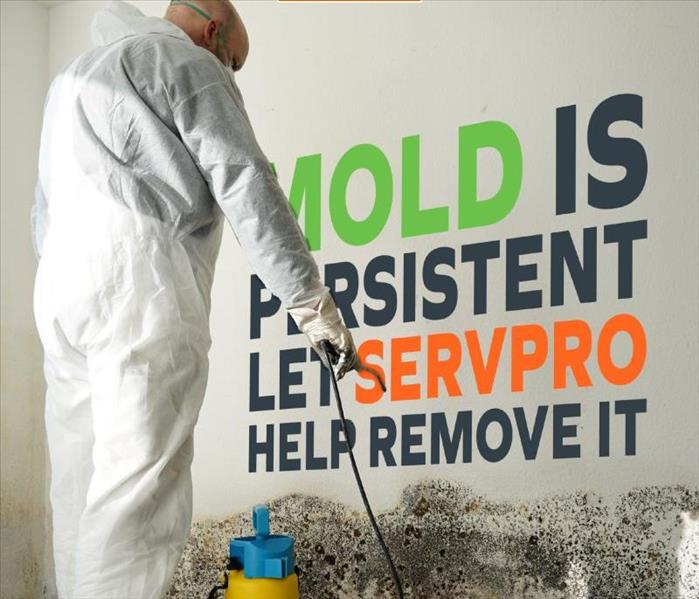Mold Removal and Remediation
11/8/2023 (Permalink)
Once you’ve identified mold within your home or business, the next step is to ensure its effective removal from the property. Considering the potential property damage and health issues that mold can cause, it’s important for you to make sure this mold is removed from the property as quickly as possible. Removing mold safely requires expertise. Despite some resources suggesting a simple spray and wipe, it is a detailed and controlled cleaning process. Here’s SERVPRO of Vero Beach’s guide to how to remediate mold.
How Does A SERVPRO of Vero Beach Mold Removal Specialist Remediate Mold?
Professional mold remediation is often a necessity in the event that mold is encountered in a property, requiring specialist equipment and expertise. The remediation of mold is a complex process and involves much more than just a simple wipe-clean of the affected surfaces. This, and the potential health hazards and risk of recurring issues, means that most mold damage scenarios are often best treated by mold remediation professionals.
If you call on a SERVPRO of Vero Beach mold remediation team to assist in your property, these are some of the steps that may be taken to treat the problem:
1.Fix Any Moisture Problems First
If you suspect that your mold problem has been started by a leak or other water problem, ensure that you fix this first. Mold requires moisture to grow, if your home or business still has a water ingress problem, it’ll make it very difficult to remove the mold problem. If your mold issues are occurring in a naturally damp environment, such as a shower room, extra ventilation may be necessary.
2. Isolate Areas of Mold
To avoid any cross-contamination, areas of mold must be isolated from other areas before demolition, cleaning, or drying can begin. Any airflow across affected moldy surfaces can spread mold spores around the building and spread contamination.
3. Throw Out Absorbent Materials
Certain items that have been affected by mold, particularly porous items, will need to be removed completely. These can either be sent for specialized cleaning or thrown away. For example, items such as carpets or furniture have fibers in which mold can remain even if you feel you’ve cleaned them thoroughly. This means they may need to be thrown out to stop the problem from reoccurring.
4. Clean Away the Mold
Once highly affected porous materials, such as gypsum board, have been removed, any remaining materials like plywood subfloors and Douglas fir framing can then be cleaned. All visible traces of mold will be removed before an antimicrobial or biocide spray is used to clean the surfaces during a wet wipe. You may have heard of "mold removal spray" products; however, these are not known to remove mold and only assist in cleaning after removal. Mold removal isn’t a job that should be taken lightly, and it requires a great level of care. SERVPRO of Vero Beach mold remediation specialist teams always wear protective clothing, that can be laundered or discarded after use. They also use gloves, goggles, and a respirator mask in order to avoid inhaling mold spores and encountering any health problems.
Call SERVPRO of Vero Beach for Mold Remediation in your home or business.






 24/7 Emergency Service
24/7 Emergency Service
